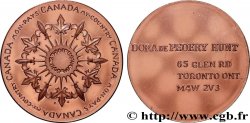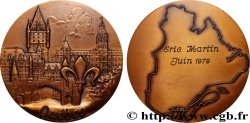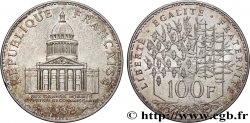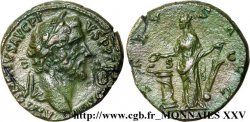fme_987507 - CANADA Médaille, Jacques Cartier
75.00 €
Menge
In den Warenkorb

Type : Médaille, Jacques Cartier
Datum: n.d.
Name der Münzstätte / Stadt : MOnnaie de Paris
Metall : Bronze
Durchmesser : 67,5 mm
Stempelstellung : 12 h.
Graveur LENOIR Pierre-Charles (1879-1953)
Gewicht : 132,17 g.
Rand lisse + corne BRONZE
Punze : corne BRONZE
Kommentare zum Erhaltungszustand:
Patine hétérogène marron claire, usures sur l’anvers, traces de nettoyage au revers, petits coups sur la tranche
N° im Nachschlagewerk :
Vorderseite
Titulatur der Vorderseite JACQUES CARTIER - 1491-1557.
Beschreibung Vorderseite Buste à droite du navigateur Jacques Cartier, habillé et coiffé. Signé : P. LENOIR.
Rückseite
Titulatur der Rückseite L’AN 1534 JACQUES CARTIER ABORDE AU CANADA.
Beschreibung Rückseite Légende circulaire autour des armoiries du Canada avec la devise A MARI USQUE AD MARE..
Kommentare
Jacques Cartier, né vers 14912 à Saint-Malo (faisant partie à l'époque du duché de Bretagne) où il y meurt le 1er septembre 1557, est un colonisateur, navigateur et explorateur breton puis français. Mandaté par le roi de France François Ier, il atteint en 1534 le golfe du Saint-Laurent et explore les territoires alentour, auxquels il donne le nom de « Canada », tiré du mot iroquoi en kanata (« village »). Il y effectue un second voyage en 1535-1536 et un troisième en 1541-1542.
Auteur de cartes aujourd'hui perdues et de Relations, récits de ses voyages, Jacques Cartier est le premier Européen à décrire et nommer cette région et ses habitants, à une époque où les Espagnols sont déjà installés dans les îles Caraïbes, au Mexique et en Amérique centrale, et commencent la conquête du Pérou.
Jacques Cartier, born around 14912 in Saint-Malo (then part of the Duchy of Brittany) where he died on September 1, 1557, was a Breton and then French colonizer, navigator, and explorer. Commissioned by the King of France, Francis I, he reached the Gulf of St. Lawrence in 1534 and explored the surrounding territories, to which he gave the name \\\"Canada,\\\" taken from the Iroquois word kanata (\\\"village\\\"). He made a second voyage there in 1535-1536 and a third in 1541-1542. Author of maps now lost and of Relations, accounts of his voyages, Jacques Cartier was the first European to describe and name this region and its inhabitants, at a time when the Spanish were already established in the Caribbean islands, Mexico, and Central America, and were beginning the conquest of Peru.
Auteur de cartes aujourd'hui perdues et de Relations, récits de ses voyages, Jacques Cartier est le premier Européen à décrire et nommer cette région et ses habitants, à une époque où les Espagnols sont déjà installés dans les îles Caraïbes, au Mexique et en Amérique centrale, et commencent la conquête du Pérou.
Jacques Cartier, born around 14912 in Saint-Malo (then part of the Duchy of Brittany) where he died on September 1, 1557, was a Breton and then French colonizer, navigator, and explorer. Commissioned by the King of France, Francis I, he reached the Gulf of St. Lawrence in 1534 and explored the surrounding territories, to which he gave the name \\\"Canada,\\\" taken from the Iroquois word kanata (\\\"village\\\"). He made a second voyage there in 1535-1536 and a third in 1541-1542. Author of maps now lost and of Relations, accounts of his voyages, Jacques Cartier was the first European to describe and name this region and its inhabitants, at a time when the Spanish were already established in the Caribbean islands, Mexico, and Central America, and were beginning the conquest of Peru.








 Berichten über einen Fehler
Berichten über einen Fehler Die Seite drucken
Die Seite drucken Teilen meiner Auswahl
Teilen meiner Auswahl Stellen Sie eine Frage
Stellen Sie eine Frage Einlieferung/Verkauf
Einlieferung/Verkauf
 Details
Details











